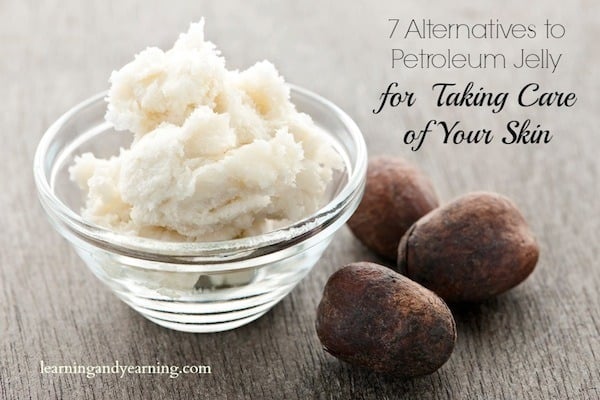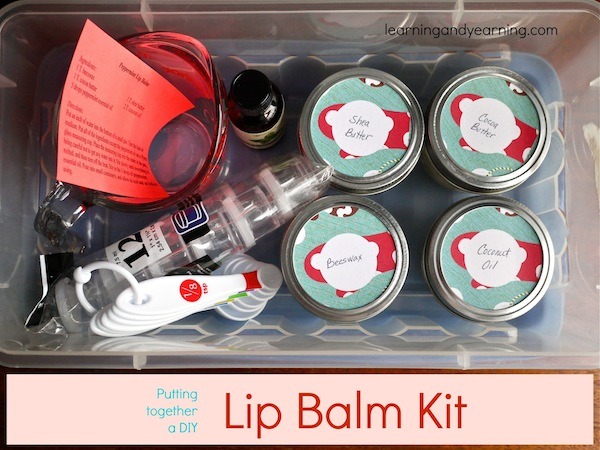
For years, I couldn’t live without Vaseline®. I used it several times a day to moisturize my lips. I have to wonder, though – if it were really moisturizing, why would I need it again a few hours later? I have long since realized that there are better alternatives than petroleum jelly for taking care of my skin.
What is Petroleum Jelly?
Petroleum jelly is, of course, a by-product of the oil industry. It was patented in 1872, and over the years has been touted as a cure-all for any and and all skin problems, including burns. Today it is most commonly used to soften skin, and is an ingredient in many cosmetics, lotions and baby-care products.
DISCLOSURE: In order for me to pay my blogging expenses, I may receive monetary compensation for my endorsement and/or link to products mentioned on this blog. I am a participant in the Amazon Services LLC Associates Program, an affiliate advertising program designed to provide a means to earn fees by linking to Amazon.com and affiliated sites.
Search the web and you’ll find lots of conflicting information on the safety of petroleum jelly. Some insist that it can cause cancer. The Environmental Working Group rates Vaseline brand as a 1, which is low on the toxicity scale.
Generic petroleum jelly gets a 4, which is cause for concern. The problem is that petroleum jelly is often contaminated with Polycyclic Aromatic Hydrocarbons (PAHS). And that scores a whopping 9 because of its potential to cause cancer, and its ability to bioaccumulate in wildlife and humans.
Even if not contaminated with PAHS, a by-product of the petroleum industry is just not something I want on my skin. Even if “safe”, it is not healing my skin, but is rather a temporary fix.
The thing is, petroleum jelly is not absorbed into the skin, so it does not truly moisturize it, but rather prevents moisture from evaporating. But it also prevents skin from absorbing moisture. It acts as a barrier, but can also trap bacteria in the skin. It does nothing to nourish my skin, and there are other items that I can use that do a better job, and are great for my skin. And it’s funny, now that I’m using these healthier products, I don’t seem to need to use them as often, especially on my lips like I did with Vaseline.
Edit: I was contacted by a representative of Vaseline® and was asked to post these corrections, which I’m happy to do: “As Vaseline® Jelly is non-comedogenic it does not suffocate pores, prevent the escape of sweat, sebum, or dirt from the skin or directly cause acne. Neither is Vaseline® Jelly 100% occlusive; it does not completely prevent moisture evaporation, but it does help skin maintain its moisture levels which promotes the skin’s own barrier repair and dry skin healing for beautiful, moisturized skin. [Ruby Ghadially, MD, Lars Halkier-Sorensen, MD, Peter Elias, MD; Effects of petrolatum on stratum corneum structure and function; J Am Acad Dermatol., 26 (3), 387-396 (Mar 1992)” Source
Alternatives to Petroleum Jelly
So, what other products can be used for skin care? Glad you asked. Below are 7 “oils” that may be used as an alternative to petroleum jelly. Six of them are rated 0 for toxicity, and one of them is rated 1 because it a potential allergen to those who are allergic to wool. Many of them are already in your kitchen.
Unrefined Coconut Oil
Unrefined coconut oil is extracted from the kernels of the seeds of the coconut palm. It provides deep and real moisture, and is easily absorbed into your skin. It also helps to strengthen underlying tissues and helps remove excessive dead cells on the skin’s surface that makes your skin rough and flaky in texture. Unrefined (or virgin) coconut oil is rich in antioxidants, is anti-bacterial, and anti-fungal. Because of it’s high level of antioxidants, it can also help to protect skin against sunburn. (Where to find unrefined coconut oil)
Cocoa Butter
Cocoa butter is extracted from the roasted seeds of Theobroma cacao, a tree native to the Americas. Cocoa butter is solid at room temperature but melts at body temperature. It is rich and creamy and soaks right into your skin. And, like coconut oil, it’s rich in anti-oxidants and has sun-blocking properties. I found cocoa butter very helpful in preventing stretch marks during pregnancy. (Where to find unrefined cocoa butter)
Shea Butter
Shea butter is a vegetable fat obtained from the fruit of a tree native to Africa. Shea butter is primarily composed of fatty acids such as stearic and oleic acids. It is especially great for lips, and anywhere you want to moisturize. The moisturizers in shea butter are the same as those produced by the sebaceous glands of the skin. It is very healing to the skin. (Where to find unrefined shea butter)
Tallow
Tallow is rendered from the fatty tissue of sheep, cattle, or deer. It consists primarily of fattyacid glycerides. Tallow from grass-fed cows is definitely the skin care ingredient of choice for me. Sebum, the oily substance secreted by our skin is similar in composition to tallow. Is that why it feels so wonderful on my skin? Perhaps. I render tallow from grass-fed beef fat the same way I render lard. Here’s how.
Lanolin
Lanolin is extracted from sheep’s wool. If you are allergic to wool, this is obviously not a good choice for you. It is not a fat, but a wax-like product secreted by the sebaceous glands of sheep. Lanolin does not clog pores, yet provides a protective barrier. Nursing mothers often use lanolin to soothe cracked nipples. As with all of the products I’ve mentioned, it is important to use only pure lanolin with no additives. (Where to find pure lanolin)
Olive Oil
Olive oil is extracted from the fruit of the olive tree. Olive oil has been used since ancient times to soothe and moisturize dry skin. Olive oil is easily absorbed by the skin and is also rich in antioxidants which can help slow the aging of skin. (Where to find extra virgin olive oil)
Jojoba Oil
Not a true oil, but rather a liquid wax, jojoba oil, like tallow, has a composition close to our own sebum. Jojoba oil helps skin to retain moisture, and has healing properties. I use jojoba in my DIY Shampoo Bars. (Where to find pure jojoba oil)
Each of these products may be used alone to soothe and nourish your skin. You may also use them to make a myriad of wonderful skin care products from lip balm to body butter. Below are links to recipes for alternatives to petroleum jelly and other skin care products that you can make yourself.
Additional Reading:
Blue Chamomile Face Cream from The Nerdy Farmwife (uses jojoba oil, and shea butter).
DIY Healing Skin Balm from 20 something allergies (uses tallow, shea butter and cocoa butter).
DIY Lip Balm Kit from LearningAndYearning (uses coconut oil, shea butter, and cocoa butter).

DIY Medicated Lip Balm from A Happy Healthnut (uses shea butter)
Healthy Skin Tips and Recipes for Winter Months from Keeper of the Home. Includes a recipe for lip balm using lanolin.
Natural Tips for Treating Dry Cracked Feet from Live Simply. This includes a recipe for Coconut Shea Butter.
Natural Skin Care from LearningAndYearning (several recipes for skin care products).
Nourishing Tallow Hard Lotion Bars from GNOWFGLINS (includes 3 recipes that use tallow, plus coconut oil and/or shea butter)
Rosemary Mint Shaving Cream from ApotheKayla (uses coconut oil and shea butter)
Soothing Tooshie Salve (Works for Your Skin, Too) (with coconut oil, and cocoa butter) from Scratch Mommy
Spicy Coffee Sugar Scrub (with olive oil) from Happy Mothering.
Whipped Body Butter from My Healthy Green Family
Are you looking for more beauty recipes? You’ll love Heather Dessinger’s (the Mommypotamus) eBook, DIY Organic Beauty Recipes. Get it here.
What do you use to keep your skin healthy and soft?

Original article and pictures take learningandyearning.com site
Комментариев нет:
Отправить комментарий